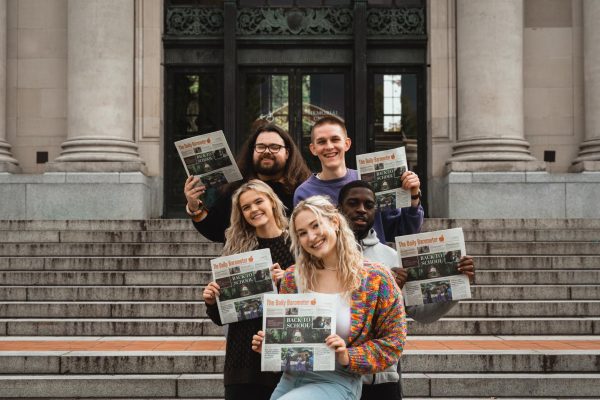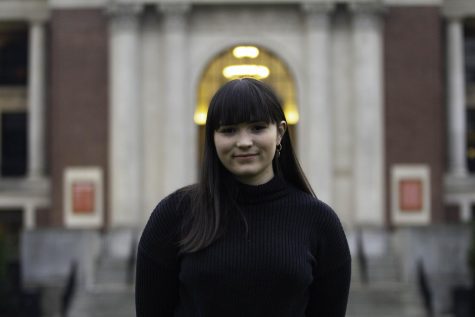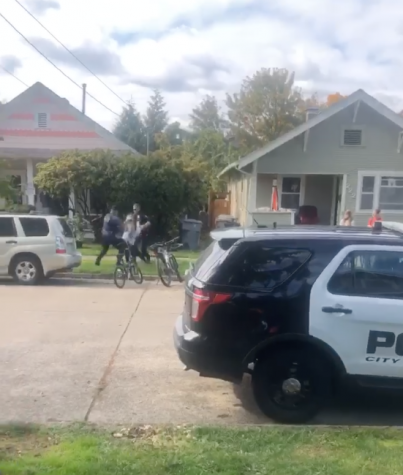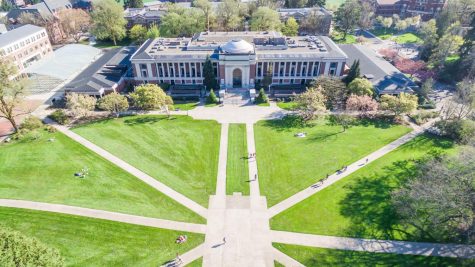How ASOSU takes the student fee budget process on a ‘SelfishRide’
February 22, 2016
Oregon State University students are being taken for a ride.
The driver: Our student government, which appears to be systematically impaired.
The Associated Students of Oregon State University met with the Student and Incidental Fees Committee for a joint session on Wednesday, Feb. 17 to approve and deny funds toward student fee-funded programs.
Out of each organization that presented, three did not receive approval from the ASOSU Congress for their proposals. These included the Student Sustainability Initiative, the performing arts and ASOSU’s very own budget.
The student government should not be allowed to approve, stall and mediate their own budget at the expense of taking funds away from others.
The three that did not pass will go into mediation until representatives from each side can come to an agreement.
ASOSU student leaders believe that they did not get enough time to present the case for their own budget, because two out of six hours—that’s more than any other organization that presented—is not enough.
The word “SafeRide” was mentioned more often than any other part of ASOSU’s budget, which seems to be the case at most of these meetings.
Look, we get it: ASOSU wants the funds for this program to increase dramatically because you want to see it grow.
Regardless, their arguments and reasoning behind its growth seems ridiculous. What’s even more is the fact that their manner about seeking these funds is childish.
As it stands, ASOSU has little to offer us this year outside of late budget deadlines, skewed charts and senseless bickering.
First, they automatically assume their programs are the most important on campus.
Other budget organizations came together to not exceed a five percent gap, acknowledging the fact that Student Health Services—quite the vital service, we might add—could obtain additional assistance over the next two years.
If everyone else needs to cut back, why can’t ASOSU?
Second, they’re still going to receive additional funds just as they did last year.
These request increments for around $250,000 need to stop, especially when they’re not even clear on the overall mission of SafeRide.
Finally, there seems to be a great desire in slashing the entire Student Sustainability Initiative budget over two words mentioned at last Wednesday’s meeting: Night Owl.
Some of their student leaders hate public transportation or the very idea of utilizing these resources.
The president herself, Cassie Huber, said many students feel “uncomfortable” with the thought of using public transportation or taxicabs—Huber mentioned her own “germaphobic” tendencies as a personal reference. At the same time, ASOSU refused to accept their own budget proposal due to “inadequate funding” for their own transportation service (SafeRide).
Mind you, this is the same president that Mykael Moore, speaker of the House, accused of improperly using a motor pool vehicle to take an extra shopping trip. Surely a student-ran night transportation service could be abused in similar ways.
As a whole, the SSI works to better achieve the university’s own mission for crafting students who are ready to make our communities more sustainable and energy efficient.
The fact that ASOSU would even consider taking funds from a more sustainable transportation method in favor of extra diesel-burning vans is deplorable.
Though we will admit this: In terms of SafeRide, credit should be placed where it’s deserved.
The ASOSU administrations of the past have done well to help maintain and expand on what the SafeRide program offers the university.
The workers, drivers and managers of the program should be commended for their continued efforts toward making sure the organization continues to help students.
But the last thing any ASOSU administration should do is think they automatically represent the voices of each and every student on campus without so much as considering other avenues.
We’re sorry that some of these student leaders feel uncomfortable on those apparently dirty, dingy buses and taxicabs.
We suggest that if this is the case, they should consider investing in their own vehicle with their own hard-earned money instead of thinking they can yank additional funds out of everyone’s student fees.
If you have more credible evidence from the majority of the student body as a whole, we suggest you gather it.
We’re not buying the wait time argument, either. If college students can wait for a pizza they pay for, we don’t believe it should take an additional 200 grand to fund an already free service. Why can’t SafeRide simply encourage students to call ahead?
Let’s also not forget the fact that ASOSU representatives have admitted to not yet trying alternative forms of funding (see: advertising on the vans themselves).
They need to fix their systems with what they already have to work with—seems to be plenty enough—before they consider robbing from other student organizations for their glorified expansion.
And contrary to popular belief, we’re tired of writing about this.
This entire situation is a complete waste of student fees no matter how you look at it.
So we hope that they reach an agreement that fairly supports all student fee-funded organizations so we can all get on with our education and find ways to better our communities.
Editorials serve as a platform for Barometer editors to offer commentary and opinions on current events, both global and local, grand in scale and diminutive. The opinions expressed here are a reflection of the editorial board’s majority.
























































































































